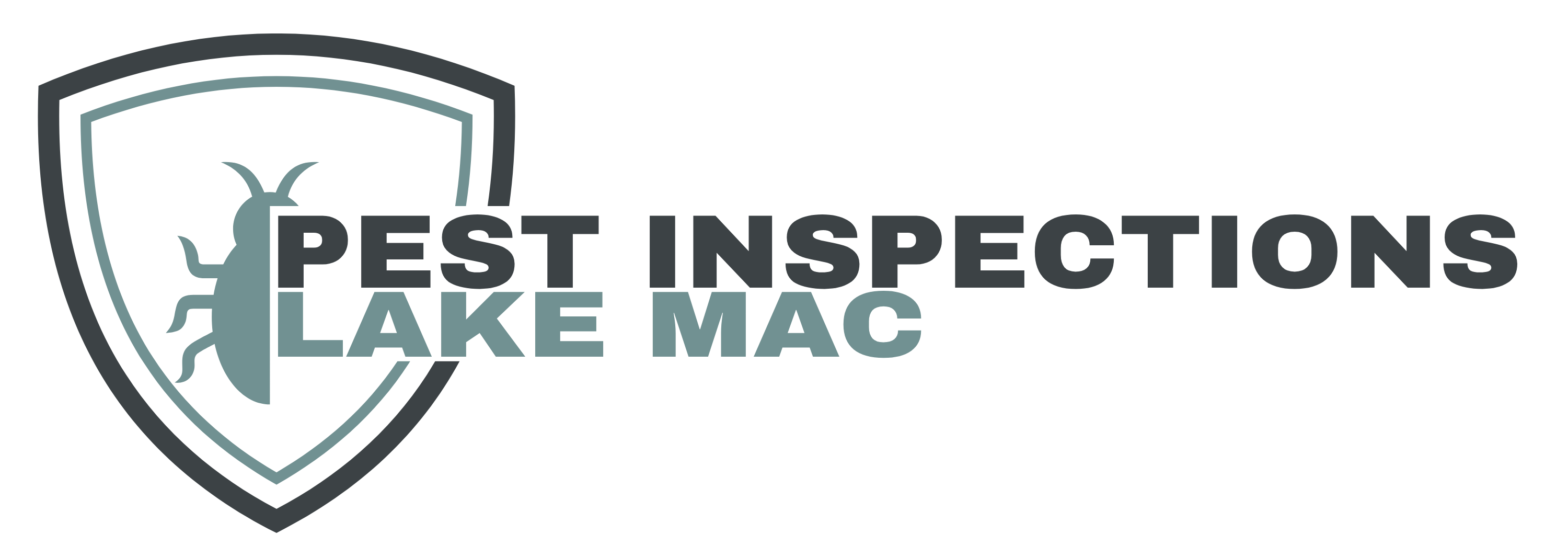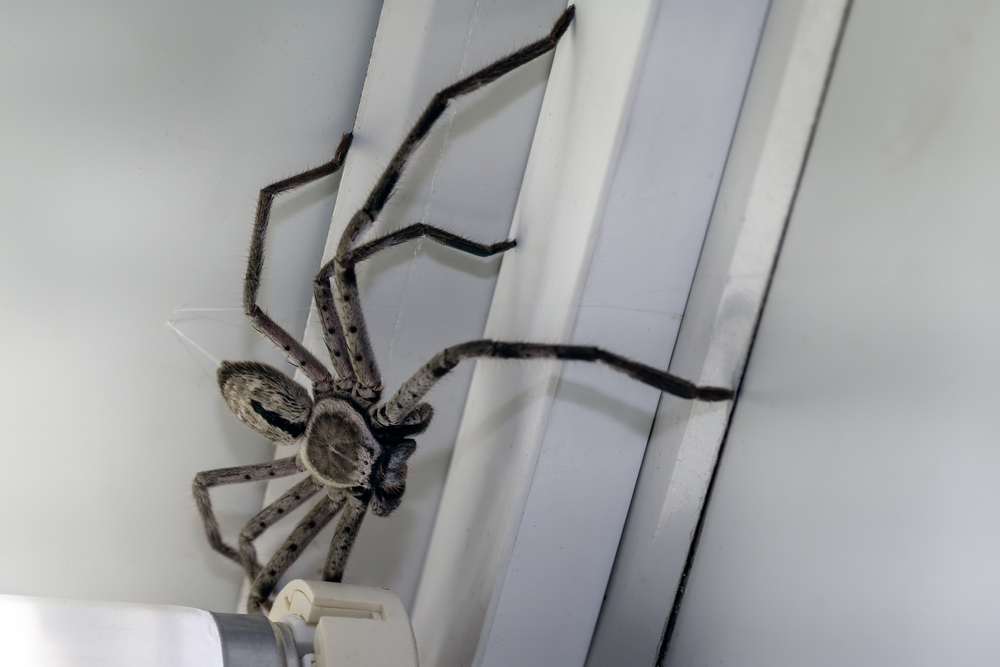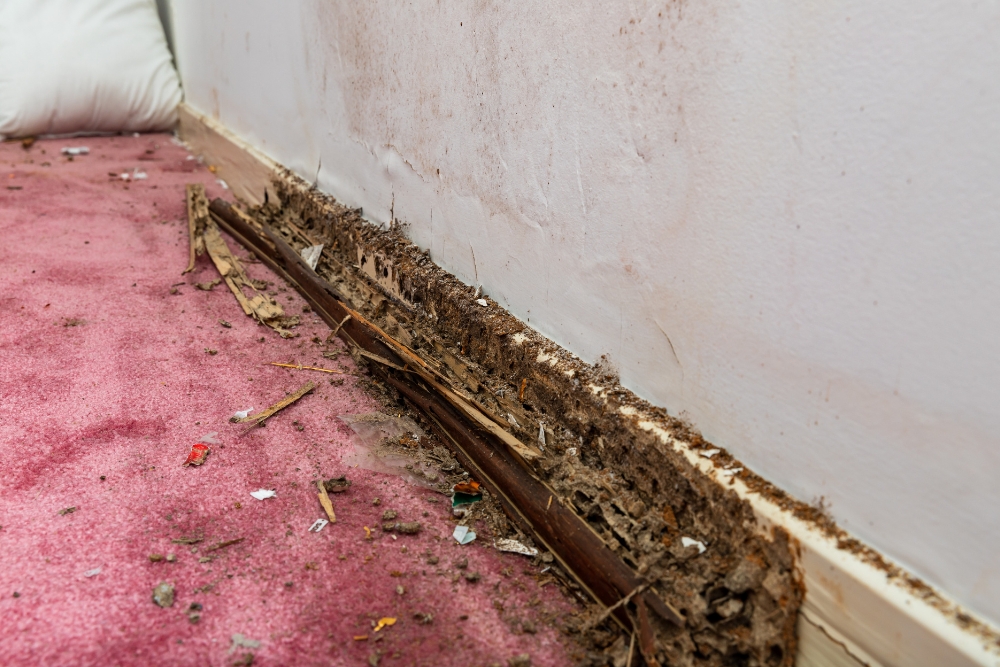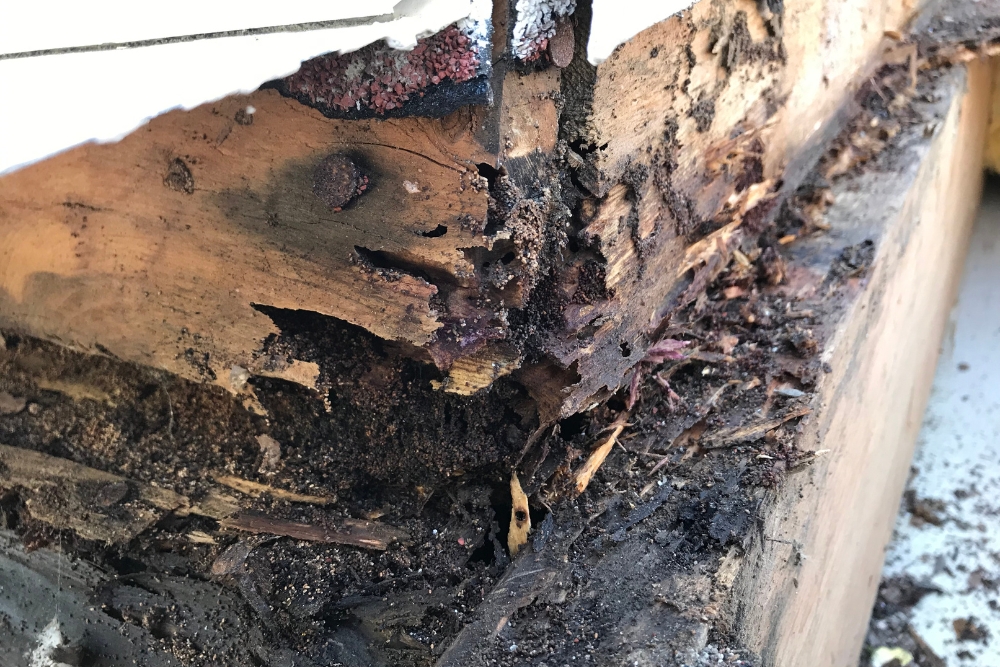Spiders often go unnoticed in our homes, yet they play a significant role as silent alarms for other hidden pests, like termites. These tiny creatures can alert us to unseen problems that may be causing damage behind the walls of our Australian homes.
Regular pest inspections become crucial in detecting these quiet critters early on, helping to prevent larger infestations and avoid costly repairs from termite damage down the line. Knowing where to look for spiders and identifying different species are key steps during an inspection. Important areas include dark corners, unused spaces, and around windows or doors where they might sneak in.
Advancements in technology have revolutionised how we detect spiders. Tools such as vibration sensors and ultrasonic devices now make it possible to keep our homes free of pests without having to rely heavily on chemical treatments.
These innovations help us spot spiders more efficiently than ever before. In addition to technological aids, maintaining prevention methods is essential for keeping future spider infestations at bay. This means sealing potential entry points and ensuring our spaces remain clean.
Our journey through this article will equip you with all you need to know about spiders – their detection, implications during pest inspections, and the innovative approaches we can take toward managing them effectively. Read on!
Key Takeaways
- Spotting spiders in your home can alert you to other hidden pest problems, like termites, causing damage out of sight.
- Regular pest inspections are vital for catching these quiet critters early. This helps prevent bigger infestations and saves money on costly repairs from termite damage.
- Knowing where to look and what spider species to look for is key during inspections. It’s important to check dark corners, unused spaces, and around windows or doors.
- Using technology, such as vibration or ultrasonic devices, improves the detection of spiders. These innovative tools help keep homes pest-free without relying heavily on chemicals.
- Keeping up with prevention methods prevents future spider infestations. Sealing entry points and keeping areas clean are effective strategies against pests.
Why Spider Detection is Important
Spider detection plays a pivotal role in the early identification and management of potential risks posed by these arachnids, especially since some species can indicate the presence of other pests, such as termites, which are known for causing substantial structural damage.
Accurate identification of spider species during pest inspections is crucial, as it can provide early warnings of underlying pest issues that need to be addressed promptly.
While spiders themselves are generally not destructive to buildings, their presence in large numbers can signal an infestation of termites or other wood-destroying insects that require immediate attention.
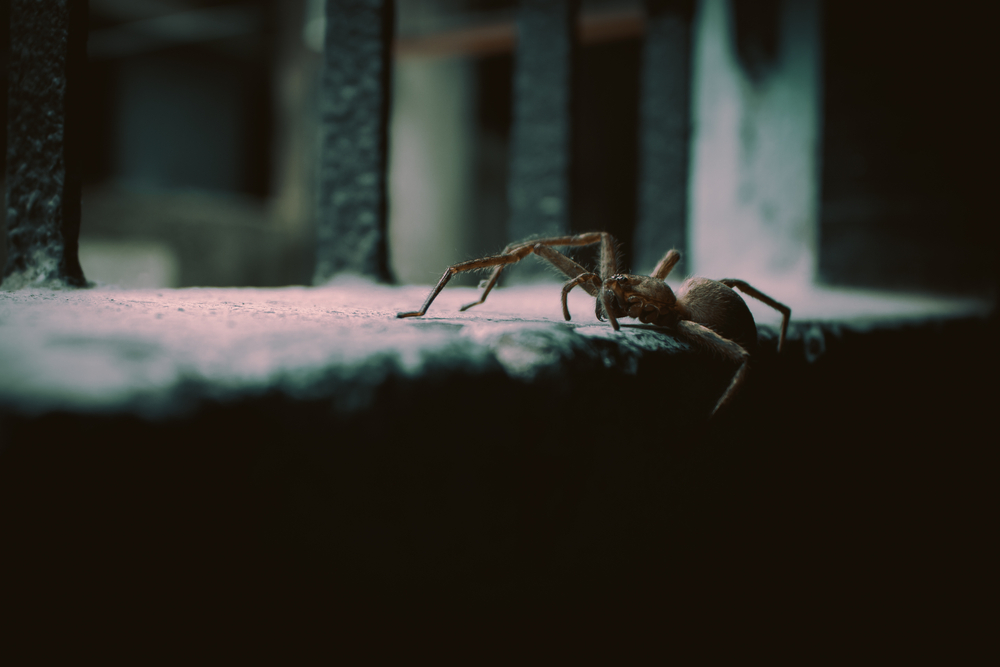
Therefore, spotting specific types of spiders can be a key factor in preventing the extensive damage these silent destroyers can inflict. By incorporating spider detection into regular pest control practices, homeowners and professionals can take a proactive approach to safeguarding properties against the significant threat termites and similar pests pose.
Identification & Risk Management
We understand the importance of identifying spiders and managing the risks they pose in homes and buildings. Detecting these quiet arachnids requires a keen eye and knowledge about where they prefer to hide.
We use this insight to educate homeowners, building inspectors, and pest inspectors on preventing infestations before they become a bigger issue. Spiders often go unnoticed until significant damage occurs, making early detection critical for effective pest control. Early identification of spiders is key to protecting homes from potential damage.
Our approach involves assessing areas most susceptible to spider infestations, such as dark corners, unused spaces, and crevices around windows or doors. We then implement targeted prevention strategies that may include sealing entry points, reducing clutter where spiders might hide, or using non-toxic repellents.
These measures form part of a comprehensive risk management plan aimed at keeping properties safe from pests without relying solely on chemical pesticides. This strategy not only helps in managing current spider populations but also deters future infestations by making environments less inviting for them.
Termite Insight
The correlation between spider activity and termite infestations can serve as an early warning system, with certain types of spiders being drawn to the same conditions as termites, thereby signalling possible termite activity.
Identifying termite species, and their preferred habitats, and understanding the ecological relationships within these environments, such as the interaction with spiders, enhances early detection and prevention efforts, mitigating widespread damage to buildings. Regular inspections conducted by homeowners, building inspectors, and pest inspectors are vital for uncovering both termite and indicator species like spiders, preventing significant harm to properties.
Armed with a comprehensive understanding of termite operations and the ecological cues signifying their presence, individuals can adopt targeted prevention methods and ensure the deployment of effective pest control measures, taking proactive steps to shield their homes from these silent, yet formidable invaders.
Damage caused by termites
Termites can cause significant damage to wooden structures, including floors and walls. These pests chomp through wood, compromising the structural integrity of buildings. The destruction caused by termites can lead to costly repairs for homeowners and building owners.
Regular inspections are crucial in identifying termite infestations early on, preventing extensive damage.
Homeowners and building inspectors must remain vigilant about termite activity to safeguard their properties from these destructive pests. Inspecting for signs of termites – such as hollow-sounding wood or discarded wings – is essential in maintaining a pest-free environment and avoiding expensive repairs.
The Impact of Spiders on Pest Inspections
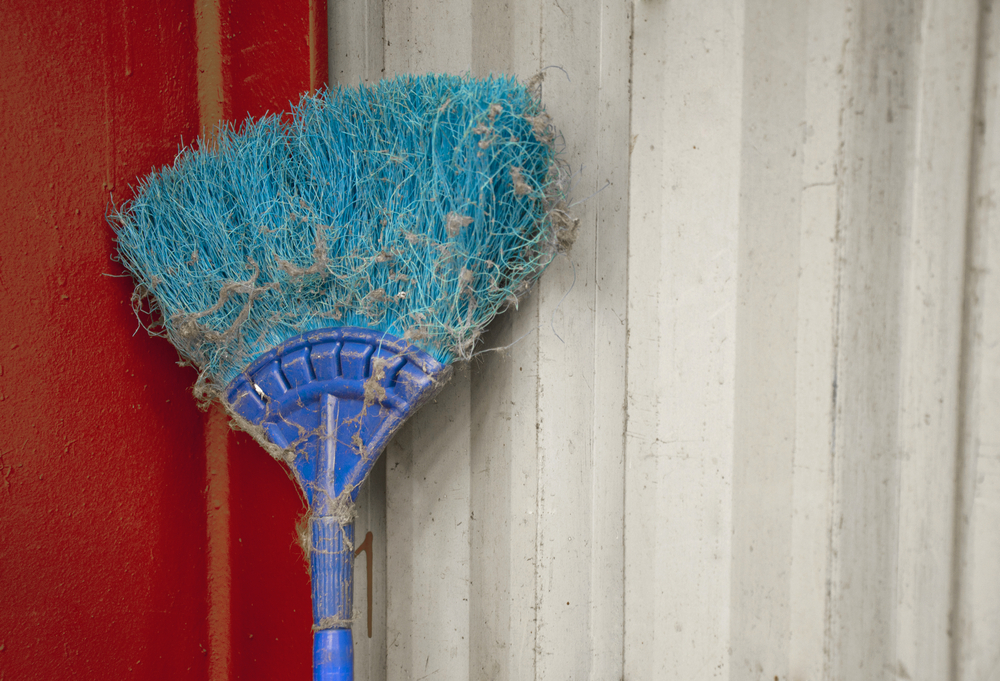
In the realm of pest inspections, spiders are more than just the focus of eradication efforts; their presence can serve as a crucial indicator of other underlying pest issues that might require attention. Detecting spiders hidden within the nooks and crannies of a property, and accurately identifying the different species encountered, are essential steps towards comprehensive pest management.
Certain spider species prefer environments that are also attractive to more destructive pests, such as termites or carpenter ants, making their presence a potential red flag for inspectors.
Understanding the specific habits and preferences of these spiders allows pest control professionals to better assess the overall health of a property and pinpoint areas at risk for infestations. Consequently, the role of spiders in pest inspections is dual: they are both a target for control measures and valuable sentinels that can guide professionals to hidden pest problems, ensuring a more effective and targeted approach to pest management.
Detecting spiders
When it comes to detecting spiders, it’s crucial to be meticulous in our approach. Here are some effective strategies for identifying and managing their presence:
- Regular Inspections: Conduct thorough and regular pest inspections to actively look for signs of spider activity.
- Web Spinning Patterns: Keep an eye out for unique web spinning patterns that can help identify the species of spider present.
- Use of Vibrations: Utilise vibration technology to detect subtle movements associated with spider presence.
- Visual Identification: Train to visually recognise various characteristics and behaviours specific to different spider species.
- Pest Detection Dogs: Consider employing specially trained dogs that can detect spiders through their keen sense of smell.
By incorporating these proactive methods, homeowners and inspectors can effectively detect spiders and take necessary precautions to prevent infestations.
Identifying spider species
Identifying spider species is essential for effective pest management. Here’s what to look for:
- Physical characteristics: Observe body shape, leg length, and colouration to differentiate between common spider species.
- Web structure: Recognise the unique web patterns spun by different spiders such as funnel webs, orb webs, or sheet webs.
- Behavioural traits: Understand the behaviour of specific spider species, like their preferred habitats and hunting strategies.
- Egg sacs and offspring: Identify distinctive features of egg sacs and young spiders for accurate species identification.
- Venomous indicators: Learn to recognise signs of venomous spiders based on physical markers and behaviours.
Understanding these key identifiers will aid in accurately identifying spider species during pest inspections.
Prevention methods
Prevention methods are crucial in keeping spiders at bay. Here’s a comprehensive list to ensure effective pest control:
- Seal cracks and crevices using silicone caulk to prevent spiders from entering the building.
- Keep the area around the property free of debris, such as leaves and woodpiles, which can attract spiders.
- Use yellow or sodium vapour light bulbs outdoors to reduce flying insects that spiders feed on.
- Install tight-fitting screens on windows and doors to prevent spider entry.
- Regularly clean and vacuum the home to remove any potential food sources for spiders.
By diligently implementing these prevention methods, we can minimise the risk of spider infestations and maintain a pest-free environment.
The Use of Technology in Spider Detection
Technology has fundamentally transformed the approach to spider detection, introducing innovative tools that significantly enhance the efficiency and effectiveness of pest inspections. Vibrational and ultrasonic devices have become invaluable in identifying the presence of spiders by disrupting their natural communication and movement patterns, allowing for easier detection.
Similarly, electronic pest control methods offer a non-invasive means to manage spider populations, leveraging electromagnetic fields to create inhospitable environments for these arachnids.

High-frequency pest repellers further contribute to this arsenal by emitting sounds that are intolerable to spiders yet inaudible to humans, effectively keeping areas clear of infestations. These technological advancements not only revolutionise how pest inspections are conducted but also promise a future where managing spider populations is more precise, environmentally friendly, and less reliant on chemical interventions.
Vibrations and ultrasonic devices
Vibrations and ultrasonic devices play a vital role in detecting spiders and other pests. Ultrasonic devices emit high-frequency sound waves, imperceptible to humans, that repel spiders and prevent them from nesting in homes.
These devices are an effective addition to pest management techniques, helping homeowners maintain a pest-free environment without the use of harmful chemicals. Additionally, vibrations created by spiders as they move can be detected through advanced technology, alerting homeowners and inspectors to potential infestations.
Integrating these technologies into regular inspections is crucial for effectively identifying and preventing spider infestations before they become a larger issue.
Electronic pest control
Electronic pest control devices emit ultrasonic sound waves that are designed to repel and deter pests such as spiders, ants, and rodents. These high-frequency pest repellers work by creating an environment that is uncomfortable for pests, driving them out of the vicinity.
Homeowners can utilise electronic pest control as a non-toxic alternative to traditional pesticides, offering a low-maintenance solution to prevent household pests without the use of harmful chemicals. Pest inspectors can recommend these devices as part of their tailored approach towards preventing and repelling insects in homes.
By incorporating electronic pest control into regular building and pest inspections, homeowners can proactively keep spiders at bay while safeguarding their properties from potential infestations.
High-frequency pest repellers
High-frequency pest repellers emit sound waves that are typically undetectable by humans, yet unpleasant for spiders and other pests. These devices can help to deter or drive out a range of arthropods, including spiders, from your home.
High-frequency pest repellers work by emitting ultrasonic waves that disrupt the feeding and communication patterns of pests without using harmful chemicals. The technology is quite effective in preventing infestations and can be a valuable addition to regular inspections and pest management techniques.
Using high-frequency pest repellers as part of your integrated pest management strategy can contribute significantly to keeping your home free from spiders and other household pests.
Regular Inspections: The Key to Preventing Infestations

Regular pest inspections play a pivotal role in the early identification and prevention of potential infestations, serving as the cornerstone of maintaining a pest-free environment. These inspections provide a proactive approach, uncovering hidden issues that, if left unaddressed, could lead to significant pest problems.
By identifying these potential vulnerabilities early on, property owners and managers can take prompt, targeted action to address the root cause of the issue before it has the opportunity to escalate into a larger, more unmanageable situation.
Furthermore, regular inspections allow for the monitoring of previously treated areas to ensure that past pest problems do not recur. This systematic approach to pest management ensures a higher level of protection for properties, ultimately saving time, money, and resources by preventing infestations before they start.
Importance of regular inspections
Regular inspections are crucial for preventing and managing pest infestations. They allow us to detect early signs of pest presence and take necessary steps to repel them effectively.
By identifying and addressing potential issues promptly, we can prevent household pests from causing significant damage to our properties and ensure a safe living environment for everyone.
Regular inspections also help in implementing tailored pest management techniques, ensuring that our homes remain free from the ever-evolving realm of spiders and other destructive pests.
Preventing and repelling household pests
Regular inspections are crucial in preventing and repelling household pests. Here’s why:
- We recommend keeping your surroundings clean, eliminating standing water, and sealing any cracks or crevices to prevent pest entry.
- Using natural repellents like peppermint or citrus oils can discourage pests from entering your home.
- Regularly checking for signs of infestation and using traps or barriers can help prevent pests from gaining a foothold in your home.
- Ensuring proper food storage and waste management is essential to deter pests from invading your living space.
- Utilising insect screens on doors and windows can act as a physical barrier against unwanted intruders.
Pest management techniques
Pest management techniques play a crucial role in preventing and controlling infestations. It is essential to employ a range of strategies to effectively manage pests. Here are some effective pest management techniques:
- Implementing proper sanitation practices to eliminate potential food and water sources for pests.
- Sealing cracks and crevices in buildings to prevent pests from gaining entry.
- Using physical barriers such as screens on windows and doors to keep pests out.
- Employing biological controls such as natural predators and parasites to manage pest populations.
- Utilising chemical controls judiciously, following all safety guidelines, and considering environmentally friendly options.
- Educating homeowners about pest prevention measures they can take, including landscape management and waste disposal.
- Regularly monitoring for signs of pest activity to address issues promptly and prevent widespread infestations.
- Collaborating with professional pest inspectors to develop integrated pest management plans tailored to specific properties.
These proactive measures contribute significantly to maintaining a pest-free environment, protecting property from damage, and ensuring the well-being of occupants.
Call Us!
Spiders pose significant risks to buildings and homes, especially in terms of destruction and the potential for termite infestations. Identifying spider species plays a crucial role in effective pest inspections, as it enables targeted prevention methods.
By embracing technology such as vibrations and electronic pest control, homeowners can efficiently detect and repel spiders. Regular inspections form the cornerstone of preventing infestations, offering practicality and efficiency in managing household pests.
Emphasising the importance of these strategies is essential to encouraging their widespread adoption by homeowners and inspectors alike.
